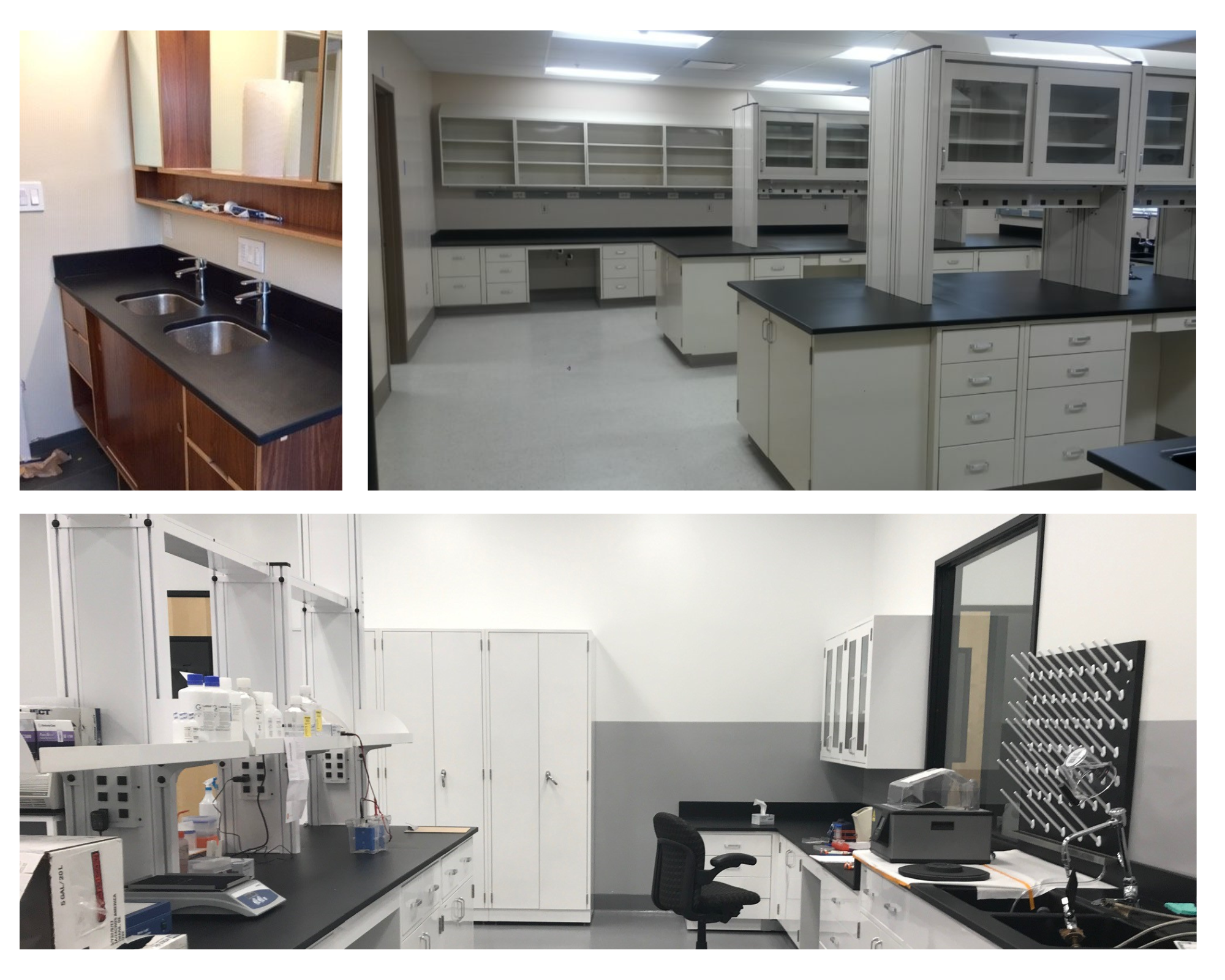There are no limits to what you can do with epoxy resin pegboards—hooks, pegs, panels, clips—you name it. All the hand tools in the hardware store are hung on pegboards, at the checkout counter, every bag of strips, rolls of duct tape, tins of tic-tac, etc.
However, this isn’t something that should surprise anyone. Pegboard presents a display system that’s sturdy, flexible, and easy to rearrange—everything you’re looking for in a workspace or your household.
Pegboards can be described as the most simple yet most effective tool organizers. All that needs to be done is insert the accessories that provide the hanging capability for your tools and other items.
No other system allows for such a clear view and tidy arrangement of objects. Because pegboards are so helpful, they are used almost all the time and in numerous settings. Nevertheless, there are a few things to keep in mind when selecting one. These come with various pegboard specs that are suitable for different uses.
What is the Standard Pegboard Size?
There are many sizes of pegboards, ranging from small 8-inch x 20-inch boards to massive 48-inch x 96-inch boards. Most pegboard materials are high-density fiberboard, wood pegboard, metal pegboard systems, plastic pegboard, masonite pegboard, and epoxy resin pegboards.
The majority of types of pegboard walls are made up of several small pieces stacked together by slide-in connectors. Because it is highly customizable, you could have multiple small pegboards by joining panels that make up one long section of pegboard.
Before heading to the nearest home improvement stores, you should plan ahead what panel sizes you need for your project. You should also consider your space and what tools you would hang on your board.
For a smaller pegboard panel, they are usually used for small projects such as a counter display. On the other hand, larger sheets of peg board tend to be used for hanging heavier tools, hanging long-handled tools, and holding other power tools.
How Thick is a Pegboard?
For metal pegboard, plastic pegboard, masonite pegboard, epoxy resin pegboard, and other types of pegboard systems, there are two thicknesses that are usually available, these are the 1/8 inches and 1/16 inches thick.
Do Pegboard Holes Have the Same Size?
In order to accommodate peg hooks and other accessories, pegboard hole spacing has a standard 1-inch spacing in between. However, hole sizes are not standardized and pegboard holes can be 1/8 inches, 3/16 inches, or 1/4 inches wide. It would be best if you chose the appropriate type for your application.
A small hole pegboard can use only peg hooks designed for 1/8-inch pegboards and are commonly used for small, delicate objects. Avoid hanging heavier tools so that the peg board won’t break.
Pegboards with large holes are usually for heavy-duty and are designed for holding heavier tools. This type of hole has a diameter of 1/4 inches, which can hold pegs and pegboard hooks with, of course, a diameter of 1/4 inches.
Tips for Using Pegboard
The following are some tips on ensuring your pegboards are being used properly so that you’re getting the most out of them.
Secure the Pegboard Hooks
Everyone’s usual complaint about pegboards? Pegboard hooks falling out whenever you remove a tool from it. To avoid this, lock and secure the hooks on the board.
Using zip ties is an easy way to secure your pegboard, and it won’t break your bank. But you must have access to the back, so you can install your pegs and zip ties before you install pegboard on your wall.
For pegboard hooks to stay in place, there are small barbs on both sides of the hook that lock into holes. Another option is to apply hot-melt glue to the lower leg before inserting the peg. While the glue will hold the hook firmly in place, it will be easily removed later with a light tug.
Hefty Standoffs
About 1/2 inch of standoff space is required to insert peg hooks into the pegboard. Metal pegboard and plastic pegboard panels have this space built in, created by the L-shape flanges along the edges. However, there are other ways to create these standoff spacers on your own.
Install screw-in standoffs with spacers. You often get short screws with small heads and flimsy plastic spacers when you buy them at the store. You can make your own by using thicker washer-head screws and nuts.
Install standoffs in the center to preserve space and provide additional support for a large peg board. One tip for this is before you install the pegboard, hold these mid-panel spacers in place with hot-melt glue.
Increase the Holding Capacity of Pegboard Hooks
Some items cannot be hung directly on a pegboard hook. But with a bit of creativity, a pegboard hook can allow you to hang anything on pegboard shelves.
Wrapping paper can be organized using hooks and wood dowels of 1/2 inches. Now you don’t have to dig through unraveling rolls of wrapping paper. Another tip is by utilizing binder clips to grab items that aren’t suitable for hanging on a hook. You can use it to hold notes, cloth bags, and such.
Slipping a PVC pipe over a long hook creates an ideal nook, where pencils, brush, zip ties, and other skinny items can be stored.
Go for Hookless Pegboard
Make your own hooks using things you can find in a hardware store. Insert No. 6 hollow wall anchor tips into 1/4-inch pegboard holes, then drive screws into the anchors to secure your tool holder. For lightweight objects, 5/16-inch lag bolts fit snugly into holes of 1/4 inches in diameter.
Hang Anything
Pegboard hooks for basic hand tools are usually available at most hardware stores and home centers, but specialty hangers are also available. Organize hard-to-hang tools with the circular saw shelf, cordless drill holder, wire basket, bins, and other doodads on your wall.
Try searching online for a pegboard with a type of hanger in your mind, such as a circle saw shelf with a pegboard. This will help you get inspiration and envision what you want for your project.
Customized Shelving
Many tools can be hung on standard pegboard hooks—but sometimes you need something more special. You can slide homemade shelves over L-hooks by drilling 1/4-inches holes in the back of the shelves.
You can also attach plywood shelves to standard pegboard shelf brackets with cable staples. It allows you to easily fit the shelf bracket legs into the holes and slide the shelf back and forth.
A Peg Board that Will Fit Your Needs
Each type of peg board accomplishes a specific purpose when it comes down to it. Whether you need a new organizational system for your laundry rooms, garage, or anywhere in your home, we can help you find the easiest, most readily available types of peg boards from the many systems that you can choose from.
We aspire to develop a personal, one-on-one relationship with our customers. With a combined 30 years of sales and design experience, we work hard to build each relationship and become your one-stop-shop for all your lab needs.
To learn more, you may email us at sales@labtechsupplyco.com or contact us at 800-476-5228 at ResinTops.net today!
Frequently Asked Questions
What type of pegboard is best for heavy-duty tools?
Among several materials used in pegboards, metal or epoxy resin pegboards are usually the best choices for heavy-duty tools because they are more durable and can bear heavier weights compared to other materials.
Can I paint my pegboard to match my lab decor?
Yes, most pegboards can be painted to match your lab decor. However, you should ensure that the paint you use won’t interfere with the functionality of the pegboard, especially if you’re using epoxy resin or metal pegboards.
Can I create my own pegboard system?
Absolutely, you can create your own pegboard system by combining different sizes and types of pegboards and using a variety of hooks and accessories. This allows for customization according to your preferred use of laboratory pegboards.
How can I prevent my pegboard hooks from falling out?
There are several ways to secure your pegboard hooks such as using zip ties or applying hot-melt glue to the hooks before inserting them into the pegboard. Ensuring that the hooks are properly inserted and locked into place can also help.
Are there any alternatives to pegboards for tool organization?
Yes, there are alternatives such as tool chests, drawers, shelves, and magnetic tool holders. However, pegboards are usually preferred due to their flexibility, visibility, and space-saving characteristics.


